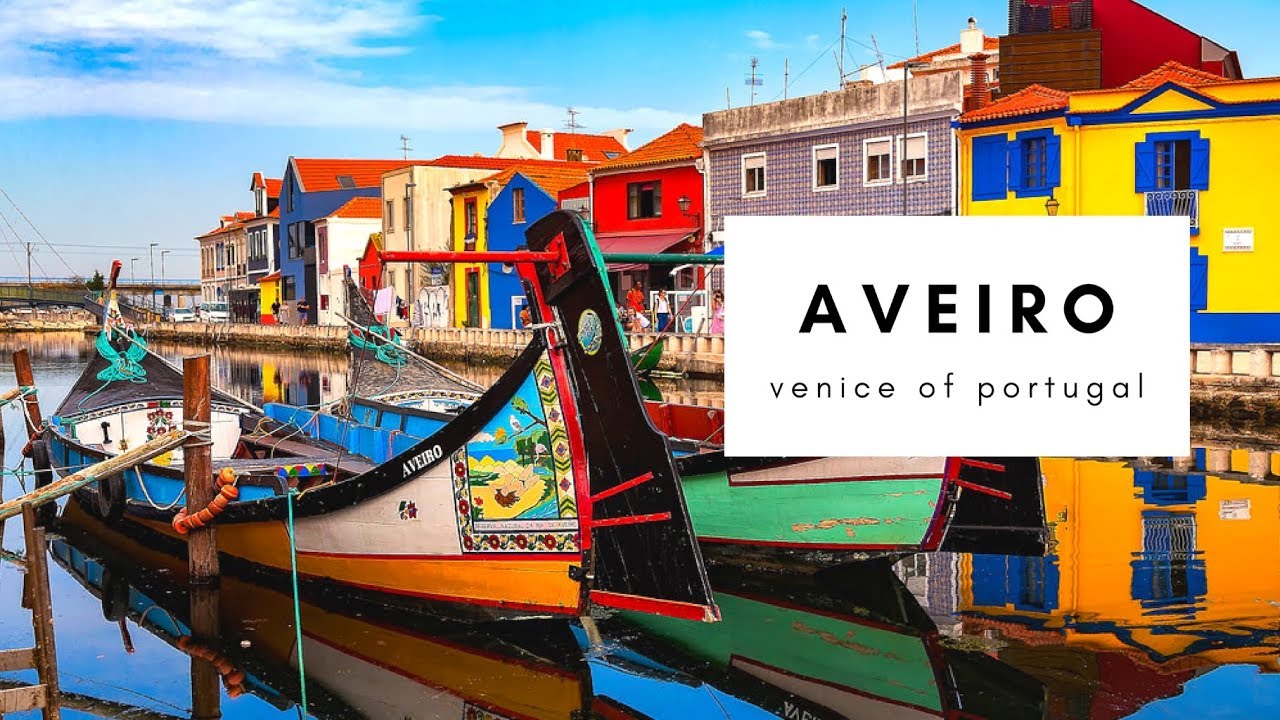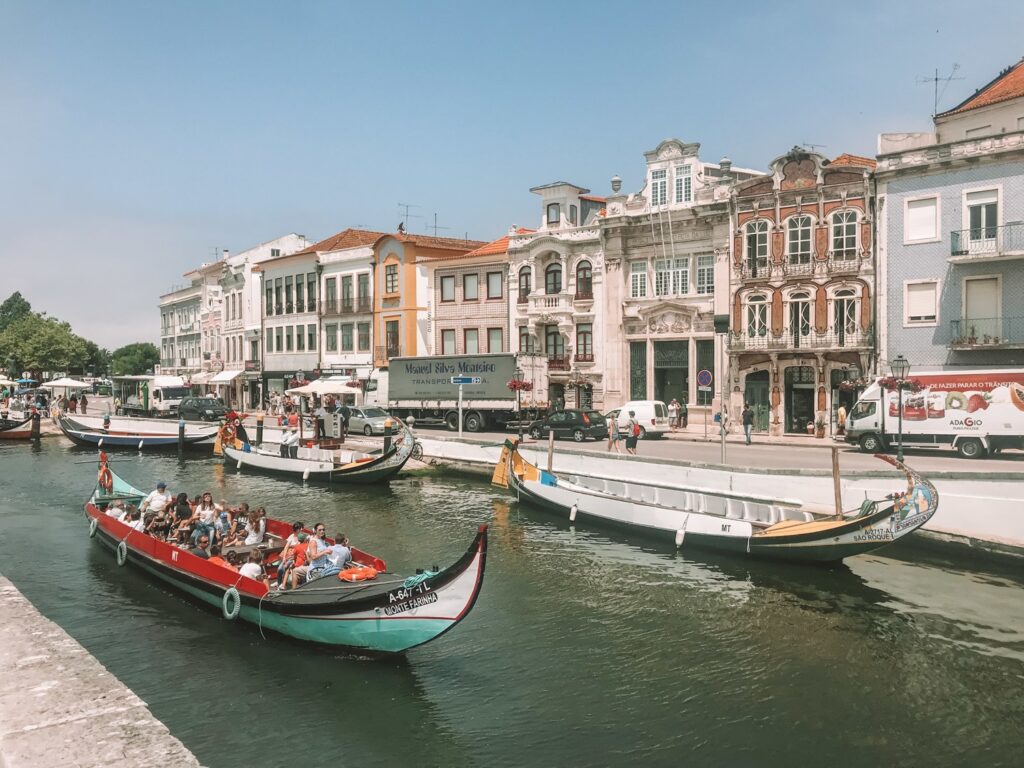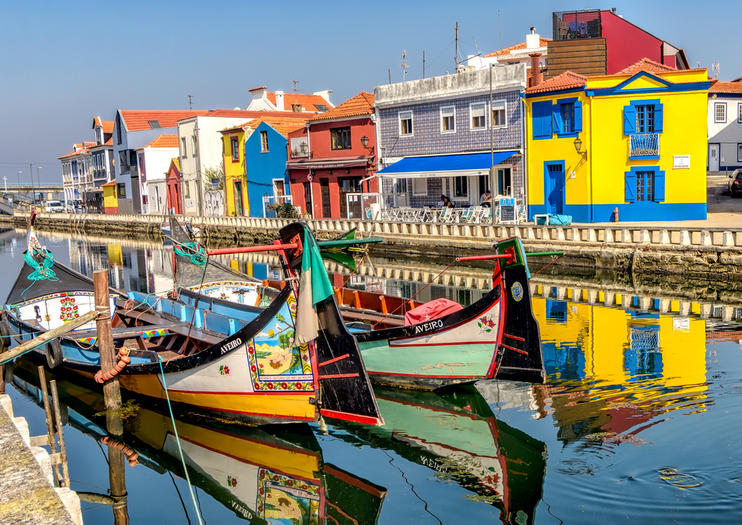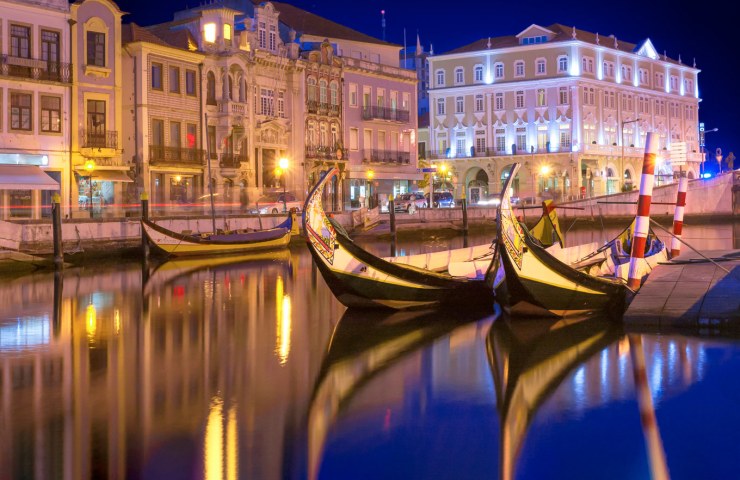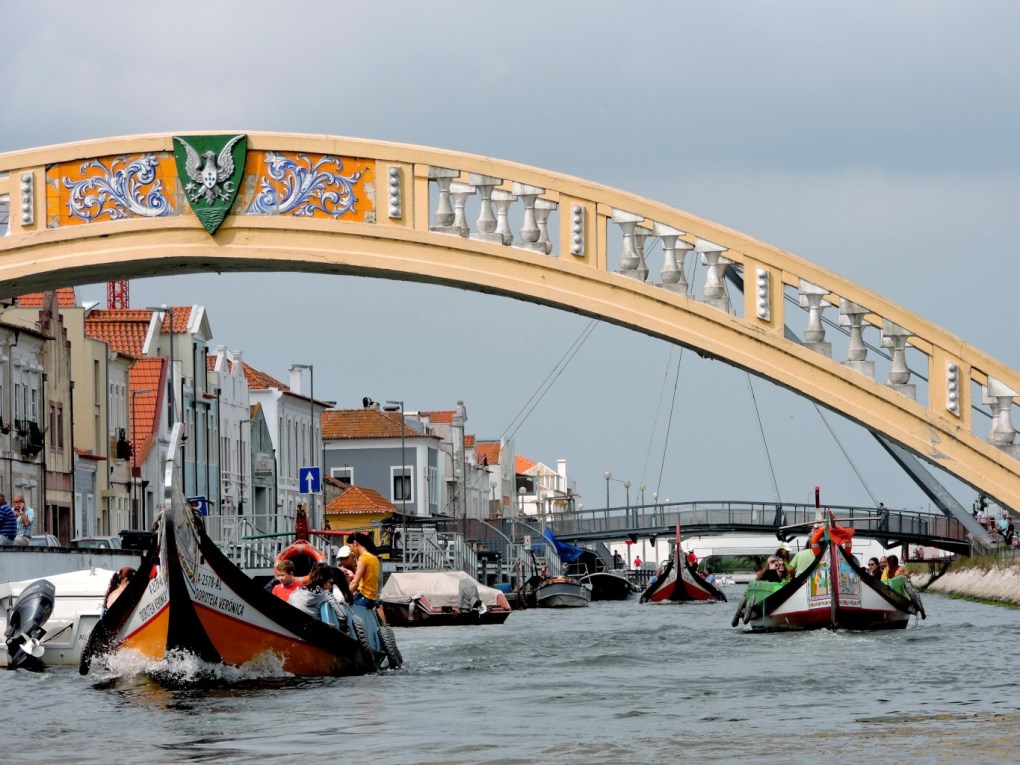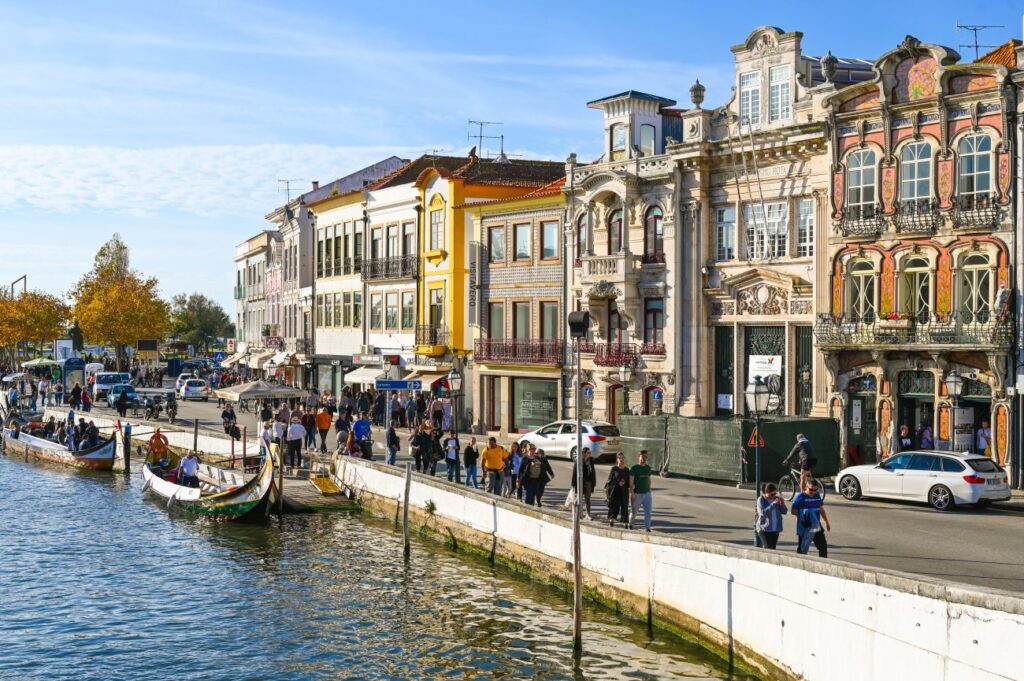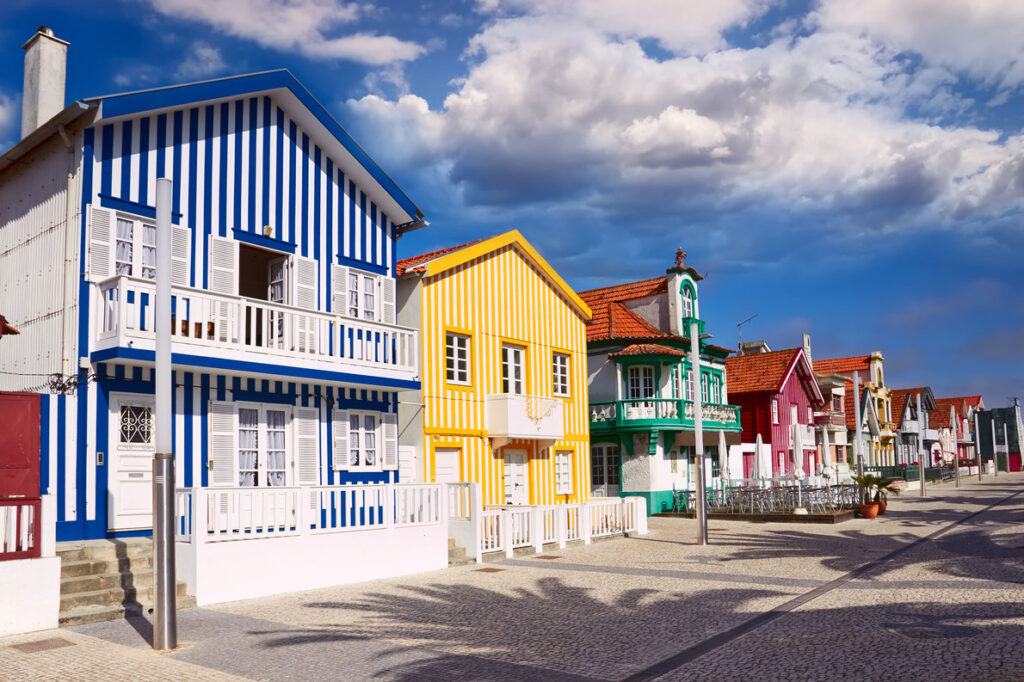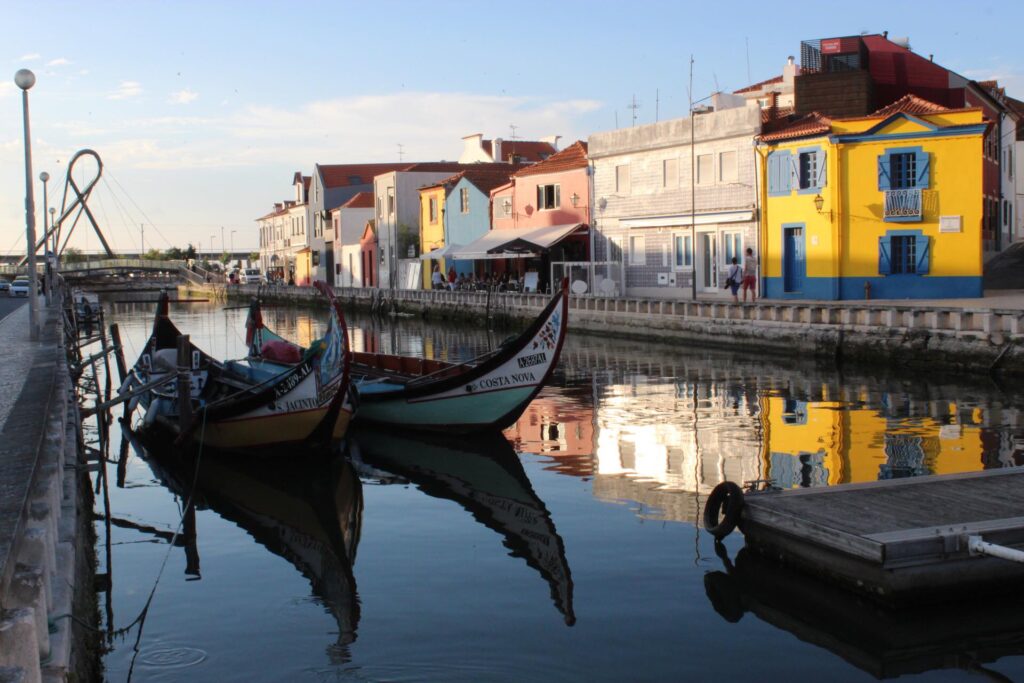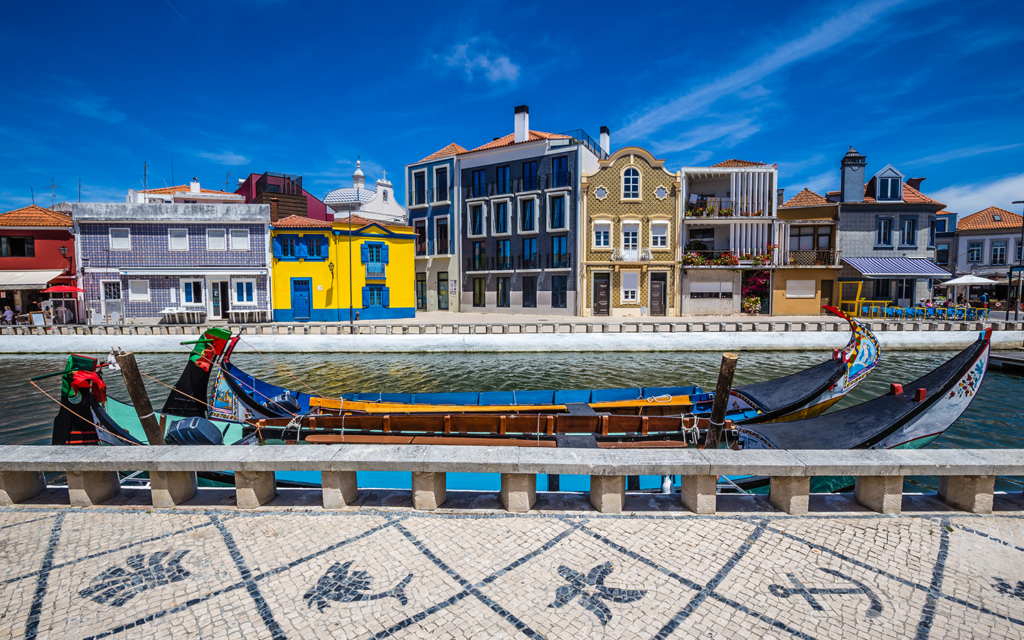Aveiro is a city and a municipality in Portugal. In 2011, the population was 78,450, in an area of 197.58 square kilometres (76.29 sq mi): it is the second most populous city in the Centro Region of Portugal (after Coimbra). Along with the neighbouring city of Ílhavo, Aveiro is part of an urban agglomeration that includes 120,000 inhabitants, making it one of the most important populated regions by density in the North Region, and primary centre of the Intermunicipal Community of Aveiro and Baixo Vouga. Administratively, the president of the municipal government is José Ribau Esteves, elected by coalition between the Social Democratic Party and the Democratic Social Centre, who governs the ten civil parishes (Portuguese: freguesias).
Geography
Located on the shore of the Atlantic Ocean, Aveiro is an industrial city with an important seaport.
The seat of the municipality is the city of Aveiro, comprising the five urban parishes with about 73,003 inhabitants. The city of Aveiro is also the capital of the District of Aveiro, and the largest city in the Baixo Vouga intermunicipal community subregion.
Aveiro is known as “the Portuguese Venice“, due to its system of canals and boats similar to the Italian city of Venice.
Climate
Aveiro has a warm-summer mediterranean climate influenced by its proximity to the Atlantic Ocean. The maritime influence causes a narrow temperature range resulting in summers averaging around 24 °C (75 °F) in daytime temperatures, considerably lower than inland areas on the same parallel on the Iberian Peninsula. As typical of mediterranean climates, summers are dry and winters are wet. A coastal feature is that frosts are rare and never severe. The hottest temperature recorded was 39.3 °C (102.7 °F). Temperatures above 32 °C (90 °F) are extremely occasional, and averages only a couple of times per annum.
Economy
Aveiro was known for many years for its production of salt and for the moliço seaweed harvest, which was used as fertilizer before the development of chemicals for that purpose. The boats once used for harvesting now carry tourists on the canals. Salt production has also decreased dramatically with only a few salt ponds still remaining.
The region is now known for the preponderance of ceramics industries, a reflection of the regions advancements, resulting in a long productive tradition since the late Roman, early Medieval period (reflected in the ceramics kilns).
Software development is important too, both at the R&D centre for a large telecom company and at the University of Aveiro (UAVR) which is attended by 15,000 students on undergraduate and postgraduate programs. UAVR works with companies in national and European R&D projects.[16][17]
The city of Aveiro has several shopping centers and malls (Pingo Doce Shopping Center, Fórum Aveiro, Glicínias Plaza (Jumbo – Auchan), Aveiro’s Shopping Center (Continente & Mediamarkt), Aveiro’s Retail Park and the Oita Shopping Center). This city has many traditional commerce stores. The most central one being Forum Aveiro with clothes stores, restaurant zone, a book shop and a cinema.
The town’s unemployment rate in 2015 was 12.5%; the university is a major employer.
Tourism
The central area with its Art Nouveau buildings and boat rides on Barcos Moliceiros attracts many tourists.
Tourism is also important for the economy. The old town centre, with its Art Nouveau and Romanesque architecture and “gondolas” (barcos moliceiros once used for collecting moliço seaweed) plying the Ria de Aveiro canals, is referred to as “The Venice of Portugal” in some tourist brochures.
Important tourist attractions are the Arte Nova (Art Nouveau) architectural designs and tiles of some buildings that were created in the early 20th century, the Art Nouveau museum, the Aveiro Museum (Museu de Aveiro, formerly the Mosteiro de Jesus convent with exhibits of King Afonso V’s daughter, Santa Joana), the 15th century Aveiro Sé or São Domingos cathedral and the Church of Jesus (Igreja de Jesus) with its beautiful architecture. The nearby beaches, Costa Nova and Barra, attract many visitors in warm weather; they can be reached by bus from Aveiro. Other sites of interest to tourists include the Carmelite Church and the Misericórdia Church built in the 16th century.
Transport
The local economy is fed by a series of transport networks that cross the municipal boundaries.
Air
Regional gateways include air service through the Aeródromo de Aveiro/São Jacinto (LPAV) and the Porto de Aveiro (Ílhavo/Aveiro).
Rail
Rail service includes service by Alfa Pendular (between Lisbon and Braga; Lisbon and Oporto; Faro and Oporto) and Intercity (between Lisbon and Oporto as well as Lisbon and Guimarães) trains; suburban links through the Urbanos do Porto and, also, the Linha do Vouga, a narrow gauge railway to Águeda and Sernada do Vouga.
Road
The primary expressways and inter-regional thoroughfares include: A1 (between Porto and Lisbon); and the A25 (which links Viseu, Guarda and Vilar Formoso).
Intercity buses connect Aveiro with Porto and Lisbon several times a day.
Water
Moliceiros provide access along the Ria for tourist visits, in addition to traditional fishing or recreational purposes, including regattas.
Architecture
The architecture of Aveiro is influenced by two phases: the pre-Kingdom era, with a number of historical monuments; and the modernist movements resulting from the expansion of economy during the 19th-20th centuries.
The city’s primary landmark is the 15th century Monastery of Jesus (Portuguese: Mosteiro de Jesus), containing the tomb of King Afonso V‘s daughter, St. Joana (who died in 1490). The presence of this royal personage, beatified in 1693, proved to be of great benefit when she bequeathed her valuable estate to the convent. In the 17th and 18th centuries, the convent housed a school of embroidery, but was transformed into the Museu de Santa Joana, or simply, the Museum of Aveiro, housing many of these handicrafts.Art Nouveau (Novo) buildings in Aveiro (2019)
The abundance of 19th-20th century architectural buildings reflects the effects of the boom during that period, including many of the Art Novo and Art Deco buildings, inspired by modernist trends and Nationalist tendencies of the Estado Novo regime. The best of these is in the university campus, where many of the nationalist architects were involved in construction projects. The Art Novo architecture was built by wealthy families from Brazil; their buildings included homes and shops. Traditional Portuguese decorations such as tiles were used. The concept did not last for a long time, but its presence is very distinctive in Aveiro; it is one of only 20 cities in the world that are included in the Réseau Art Nouveau Network, listing cities in Europe that are known for this architectural style.
There are several attractions in the city of Aveiro, including cathedrals, canals and the beaches, including the Ílhavo ceramica de Vista Alegre and the beaches of Barra, Costa Nova do Prado, and Gafanha da Nazaré.
Culture
Aveiro is known in Portugal for its traditional sweets, Ovos Moles de Aveiro (PGI), trouxas de ovos, both made from eggs. Raivas are also typical biscuits of Aveiro.
The municipal holiday is 12 May, the day of Joanna, Princess of Portugal (1452-1490).
Education
The University of Aveiro was created in 1973 and attracts thousands of students to the city. It is ranked as the 354th best university in the world in the Times World University Rankings, and the 2nd best in Portugal.
The University has about 430 professors (with PhD degrees), 11,000 undergraduate students, and 1,300 post-graduate students.
Sport
Sport Clube Beira-Mar is an association football club. Founded in 1922, it has a sports academy with various youth levels in sports including basketball and futsal. The club used to play at Estádio Municipal de Aveiro, designed by Portuguese architect Tomás Taveira for Euro 2004, where it held two group matches.
The other long-established club in the city, Os Galitos, was founded in 1904 and houses a wide variety of sports. Its rowers have represented Portugal in international tournaments including the Olympic Games.
Notable citizens
- João Afonso de Aveiro, explorer, first to visit the region of Benin in Nigeria (naming the river located there, the Rio Fermoso), helped to build Mina fort, but never returned; he died in the region, credited for bringing to Lisbon pepper, and as one of the discoverers of the Newfoundland fisheries.
- Mário Sacramento (7 July 1920 – 27 March 1969), physician and essayist that was famous for his anti-fascist activities against the Estado Novo regime.
- Zeca Afonso (2 August 1929 – 23 February 1987), a singer and composer, José Manuel Cerqueira Afonso dos Santos was one of the most influential folk and political musicians in Portuguese history.
